
We are already two months into the academic year. Cooperation and coordination between the nursery and parents have ensured that our pupils have acclimated to Nursery life. They are following our timetables and understand the class routines, such as when to go to the toilet, when to wash their hands and when to have lunch and snacks. These are the foundations of good life habits. Another one of the key ways that we instil in our pupils the value of good habits is through schematic play.
A schema is like a set of instructions. As adults, we use them all the time without even realising it. When we switch on a light or make a sandwich, we actually are using a schema to do it. It is a mental model we have created through a process of trial and error to find the best and most efficient way of completing our tasks. Our schemas are not always right, though. They simply represent the current state of our knowledge. Over time, as we explore further, we come to realise that there were gaps in our understanding. We can then revise our schema to reflect this new information. Schematic play is especially noticeable in toddlers. They attempt to express their thoughts and needs through a variety of behaviours, such as bashing, banging, pushing and pulling. Destruction testing is a key feature of this kind of behaviour. In the process, they may think to themselves: “What does this thing do? What happens if I drop it? Will it break if I hit it? What if I hit it again?” Children want the answers to these questions and will persist until they have them. This shows that they are trying to make sense of the world around them and how it works.
There are eight common types of schema.
1. Trajectory Commonly observed in infants, this schema is characterised by movement of the extremities and torso along horizontal, vertical and diagonal lines.

Try this at home:
•Throw objects at a target
•Roll toy cars down a ramp
•Play chasing games like tag
Recommended toys:
•Wooden railway
•Toy cars
•Different sized balls
2.Transporting In this schema, children become intent on moving objects from one point to another. They may carry objects in their pockets or place them in containers, baskets or trolleys.
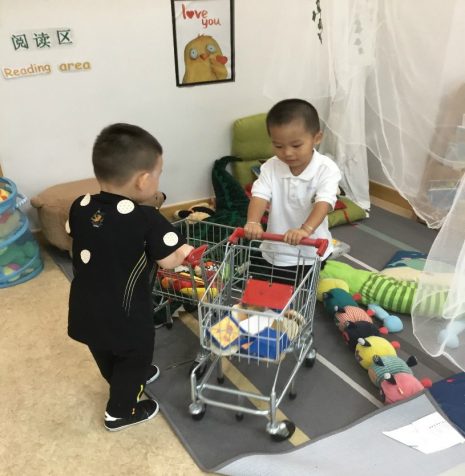
Try this at home:
•Give your child bags and parcels to transport items
•When preparing for an outing, encourage your child to carry snacks, cakes or biscuits in a basket
3.Rotation Children exhibit this schema when they turn or rotate themselves or objects. It manifests itself in behaviours such as turning the water tap on or off or twisting and uncoiling rope.
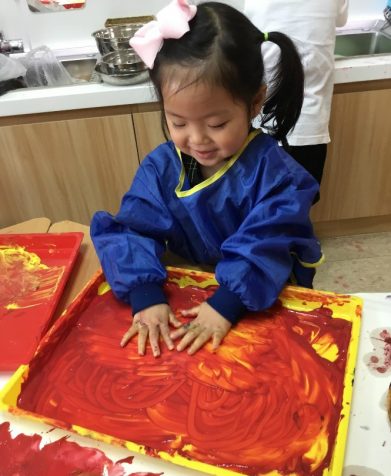
Try this at home:
•Observe wheels on cars spinning drum of a washing machine
•Ride a bicycle
•Turn door handles
•Turn keys in locks
•Draw spirals in sand or with finger paint
•Mix cake ingredients
4.Enclosing Children often show interest in enclosed spaces by building fences or walls around objects or themselves.
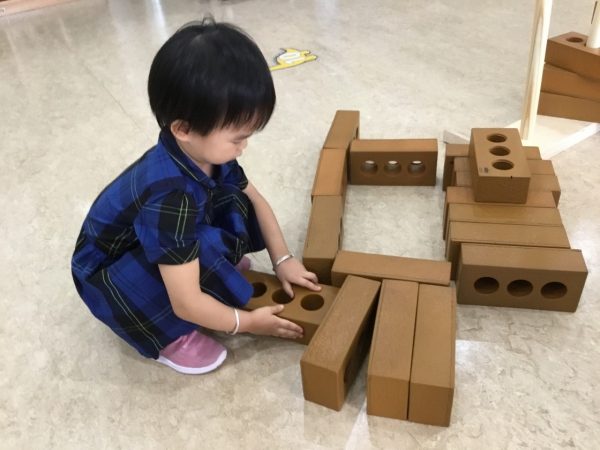
Try this at home:
Provide them with materials such as wooden building blocks to build a farm or a parking lot in which they can enclose toys or other objects.
5.Enveloping Children are often seen covering objects or themselves with different materials, such as scarves, blankets and boxes.
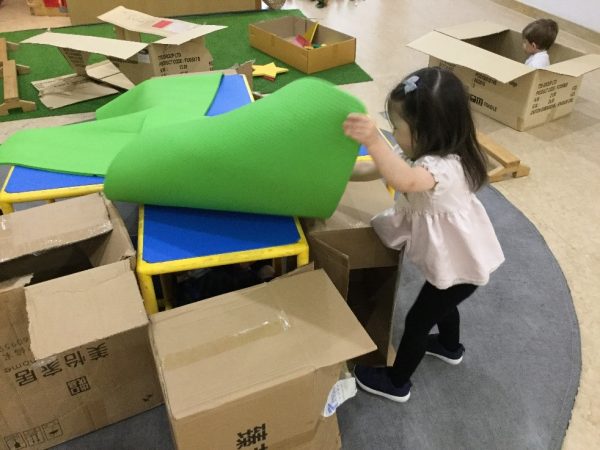
Try this at home:
•Play with Russian (Matryoshka) dolls, or other nesting and sorting toys
•Role-playing: play doctor, bind up dolls with bandages
•Wrap up dolls in blankets
•Wrap up gifts together
6.Orientation Children can be observed looking at things from different viewpoints. They may position themselves in different ways, such as upside down, or they may reposition objects in relation to themselves.
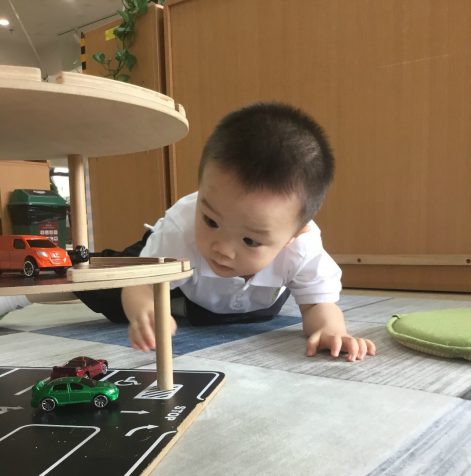
Try this at home:
•Have your child lie flat on the floor when playing with toy vehicles
•Let your child sit on your shoulders
•Let your child hang upside from the monkey bars under your supervision
7.Positioning Children demonstrate this schema by positioning, ordering and arranging objects or themselves.
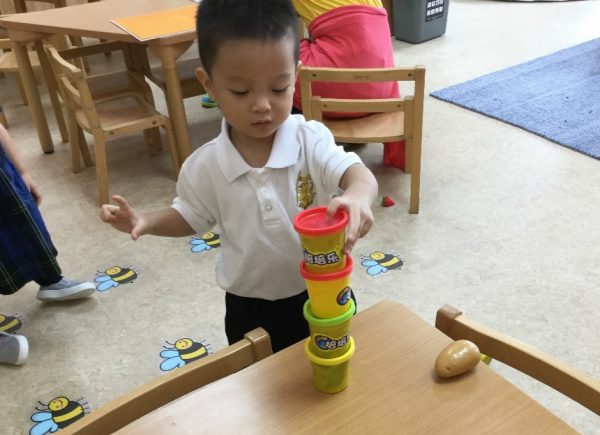
8.Connecting Children who exhibit this schema join objects together.
They may tie things together with rope, string, tape or ribbon.
They may also fasten materials like fabric together or suspend items from chairs or trees.
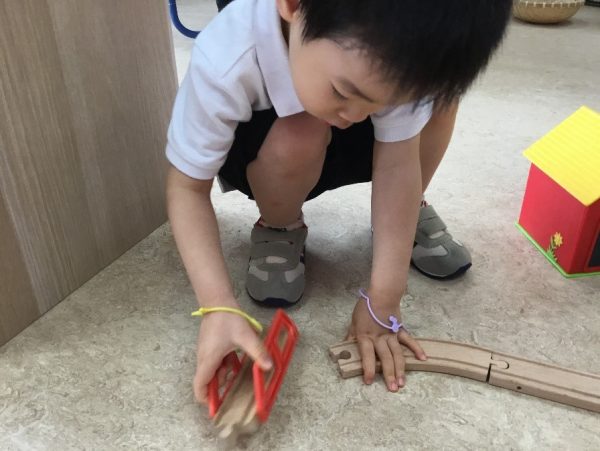
Try this at home:
•Join hands to make a circle
•Make paper chains
•Make collages
• Make toys from discarded items like shoeboxes
Recommended toys:
•Lego
•Magnetic toy trains and railway
•Threading beads Children exhibit schematic play naturally.
If you have ever seen your child engaged in this kind of play, you can encourage it at home by incorporating our suggestions into their play routine. Even if they do not exhibit this behaviour, you can create opportunities for schematic play using our recommended materials and toys. Rest assured, you will see remarkable progress.